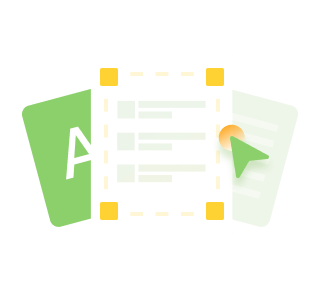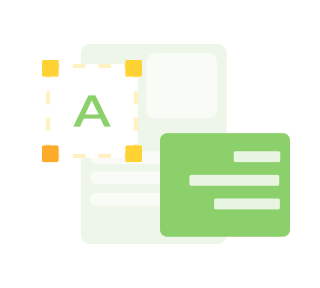Image to Text Model for Text Recognition in Images
The ability to extract and utilize text from images has become a crucial tool across a wide range of fields. From automating routine tasks like data entry to improving accessibility for people with visual impairments, image-to-text technology is reshaping how we engage with visual content. This article explores the intricacies of image to text models, with a particular focus on the cutting-edge techniques used by platforms like Hugging Face, and takes an in-depth look at the PDNob Image Translator, which employs advanced OCR technology to provide seamless text recognition.
Part 1: Image to Text Model
The image-to-text model employs a range of techniques to convert visual information into text format. The primary technology behind this transformation is Optical Character Recognition (OCR), which scans and interprets the characters within an image, allowing for accurate text extraction.
What is Image to Text Model?
An Image to Text Model is a type of machine learning system designed to recognize and extract text from images, converting it into machine-readable formats. It combines advanced technologies like Optical Character Recognition (OCR) and deep learning algorithms to identify characters and words within visual content. These models can handle various forms of text, including printed, handwritten, or even complex layouts like scanned documents or photographs. The primary goal is to enable accurate extraction of text from any image, which can then be edited, processed, or searched digitally.
Importance of Image to Text Model
- Automates Data Entry: Streamlines processes by converting physical documents into digital text, reducing manual data entry.
- Enhances Accessibility: Provides visually impaired individuals with access to text in images, improving inclusivity and usability.
- Boosts Productivity: Speeds up tasks like document scanning, digitizing books, and extracting text from images for editing or analysis.
- Improves Information Searchability: Transforms images into searchable text, enabling easier retrieval and organization of data.
- Preserves Historical Documents: Digitizes and archives old manuscripts, newspapers, or books for easy access without damaging the originals.
- Enables Multilingual Text Recognition: Supports extracting text from images in multiple languages, making it valuable for global applications.
- Facilitates Data Extraction in Business: Helps businesses automate invoice processing, form completion, and legal document handling.
Understanding the Image-to-Text Process
The image-to-text conversion process involves several stages, including image preprocessing, character recognition, and post-processing. Initially, the image is cleaned and enhanced to improve readability. This may include adjusting brightness and contrast, removing noise, and correcting skewed text.
Once the image is prepared, the OCR algorithm analyzes the visual data. Traditional OCR models rely on pattern recognition, where the software identifies characters based on their shape. However, advancements in deep learning and neural networks have led to the development of more sophisticated models that can learn from vast datasets and improve their accuracy over time.
Hugging Face Image to Text Models
Hugging Face has emerged as a leader in natural language processing (NLP) and machine learning, providing an extensive library of pre-trained models, including those specifically designed for image-to-text tasks. Their models harness the power of transformer architecture, which has shown remarkable success in various NLP applications.
HuggingFace image to text models are particularly notable for their ability to handle a diverse range of input formats, including handwritten text, printed documents, and complex layouts. By leveraging transfer learning, these models can adapt to new datasets and improve their performance without extensive retraining. This image to text huggingface flexibility makes them suitable for applications in various industries, from finance to healthcare.
Part 2: The Role of OCR in Image-to-Text Conversion
OCR technology plays a pivotal role in enabling image-to-text conversion. It serves as the bridge between visual information and digital text, allowing users to access, edit, and manipulate text that was previously confined to image formats.
Recent developments in OCR technology have introduced deep learning techniques that enhance accuracy and reliability. Convolutional neural networks (CNNs) and recurrent neural networks (RNNs) are commonly used in modern OCR systems. CNNs excel at feature extraction from images, while RNNs are adept at processing sequential data, making them ideal for understanding text structure and context.
Applications of Image-to-Text Models
The applications of image-to-text models are vast and varied. In business, companies utilize OCR technology to digitize documents, automate data entry, and streamline workflows. Educational institutions benefit from the ability to convert textbooks and learning materials into accessible formats for students with disabilities.
Moreover, image-to-text models play a crucial role in archiving and preserving historical documents. By digitizing these texts, researchers can analyze and share valuable information without compromising the integrity of the original materials.
Part 3: OCR Model - PDNob Image Translator
PDNob Image Translator is a cutting-edge tool that leverages advanced OCR and image-to-text technology to facilitate seamless text recognition in images. Whether for personal use or professional applications, PDNob Image Translator offers an intuitive platform for converting images into editable text formats, enhancing productivity and accessibility.
This innovative tool is designed to recognize text in multiple languages and supports various image formats, including JPEG, PNG, and PDF. With its user-friendly interface and robust capabilities, PDNob Image Translator has quickly become a preferred choice for users seeking efficient text recognition solutions.
Convert image to text free
The OCR and Image-to-Text Technology behind PDNob Image Translator
At the core of PDNob Image Translator lies a sophisticated OCR engine that integrates deep learning algorithms and advanced image processing techniques. This combination allows the tool to achieve high levels of accuracy in text recognition, even in challenging scenarios, such as low-resolution images or complex backgrounds.
PDNob Image Translator employs a multi-step approach to OCR, which includes:
- Image Preprocessing: The software optimizes images for analysis by enhancing clarity and removing background noise. This step is crucial for improving recognition accuracy.
- Text Detection: The tool identifies and isolates areas containing text within the image, utilizing deep learning models trained on extensive datasets. This allows it to differentiate between text and non-text elements effectively.
- Character Recognition: After text detection, the software applies OCR algorithms to recognize individual characters and convert them into machine-readable text. PDNob Image Translator deep learning-based recognition model improves its performance as it processes more images.
- Post-Processing: To enhance the accuracy of the recognized text, PDNob employs various techniques such as spell-checking and context analysis. This ensures that the output is coherent and error-free.
How to Use PDNob Image Translator for Text Recognition
Using PDNob Image Translator to recognize text in images is a straightforward process and better then GPT image to text translator. Here’s a step-by-step guide to help you get started:
- Start by downloading PDNob Image Translator on your PC, and follow the installation process.
PDNob Image Translator
Image to Text Converter enables you to accurately extract text from all types of images without storing any picture files into the program.
- After installation, open any PDF or image file. To extract text, press Ctrl + Alt + Z on Windows (or Command + 1 on macOS ) . Your cursor will turn into a selection tool to highlight the text area.
- Once you've selected the text, a pop-up window will appear, displaying the extracted text from the image.
- Choose your preferred translation language from the available options, and the tool will provide the translated version.
This simple process allows quick and efficient text recognition and translation from images.
Benefits of Using PDNob Image Translator
The PDNob Image Translator offers several advantages that make it a valuable tool for individuals and businesses alike:
- High Accuracy: With its advanced OCR technology, PDNob Image Translator consistently delivers accurate text recognition, minimizing the need for manual corrections.
- Multilingual Support: The tool's ability to recognize text in multiple languages makes it suitable for a global audience, accommodating diverse user needs.
- User-Friendly Interface: PDNob Image Translator intuitive design ensures that users can navigate the platform effortlessly, regardless of their technical expertise.
- Time Efficiency: By automating the text recognition process, PDNob Image Translator saves users time and effort, allowing them to focus on more critical tasks.
- Accessibility Features: The ability to convert images into editable text enhances accessibility for individuals with disabilities, ensuring that information is available to everyone.
Why PDNob Image Translator is best choice?
PDNob Image Translator stands out as the best choice for image-to-text conversion due to its exceptional accuracy and advanced Optical Character Recognition (OCR) technology. This ensures reliable text extraction from various image formats, including scanned documents and photographs. The tool’s multilingual support allows users to recognize and translate text in multiple languages, making it ideal for global applications. Additionally, its user-friendly interface simplifies the process, enabling users of all technical backgrounds to navigate the platform effortlessly.
Part 4: Conclusion
In conclusion, image to text ai models, particularly those powered by advanced OCR technology, are transforming how we interact with visual information. The PDNob Image Translator stands out as a reliable tool that harnesses these capabilities to offer seamless text recognition. By making it easy to extract text from images, PDNob Image Translator enhances productivity, supports accessibility, and paves the way for more efficient information management. As technology continues to evolve, the potential applications of image-to-text models will only expand, further integrating them into our daily lives and workflows.
PDNob Image Translator
Image to Text Converter enables you to accurately extract text from all types of images without storing any picture files into the program.






